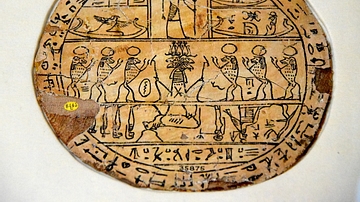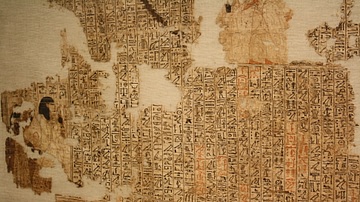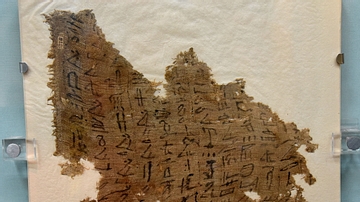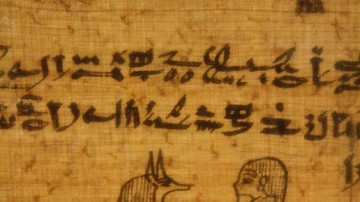Illustration
Hypocephali are inscribed discs usually of plastered linen and less frequently of papyrus or bronze, which were placed beneath the heads of mummies in the Late/Ptolemaic Periods. The texts written on them were taken from spell 162 of the Egyptian Book of the Dead and were intended to provide life-giving heat to ensure resurrection of the dead. Images of deities connected with the notion of creative power and renewed life supplemented the potency of the text. At the center of this hypocephalus, we can see the 4-headed ram of Mendes, adorned with baboons. From the Tomb G of Djedhor, cemetery G at Abydos, Egypt. 30th Dynasty, 380-343 BCE. (The British Museum, London)
About the Author
Cite This Work
APA Style
Amin, O. S. M. (2016, April 12). Bronze Hypocephalus of Djedhor. World History Encyclopedia. Retrieved from https://www.worldhistory.org/image/4897/bronze-hypocephalus-of-djedhor/
Chicago Style
Amin, Osama Shukir Muhammed. "Bronze Hypocephalus of Djedhor." World History Encyclopedia. Last modified April 12, 2016. https://www.worldhistory.org/image/4897/bronze-hypocephalus-of-djedhor/.
MLA Style
Amin, Osama Shukir Muhammed. "Bronze Hypocephalus of Djedhor." World History Encyclopedia. World History Encyclopedia, 12 Apr 2016, https://www.worldhistory.org/image/4897/bronze-hypocephalus-of-djedhor/. Web. 03 Jul 2025.








